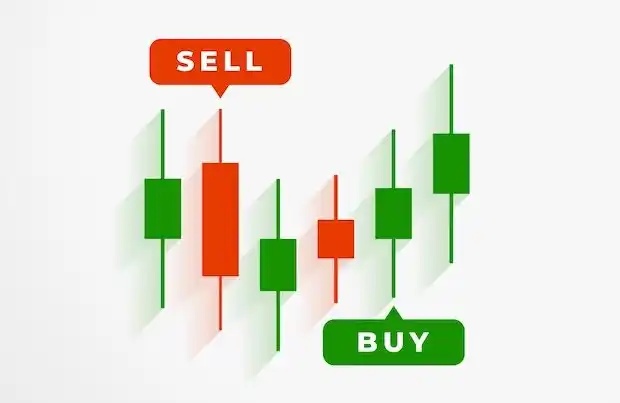Vitalik's new article: It's time to "align" the entire Ethereum ecosystem
Original title: Making Ethereum alignment legible
Original author: Vitalik Buterin, Ethereum co-founder
Original translation: Scof, ChainCatcher
In the Ethereum ecosystem, balance is the most important governance challenge - or more precisely, integrating decentralization and cooperation. The advantage of this ecosystem is that there are a wide range of individuals and organizations - client teams, researchers, second-layer network teams, application developers, local community groups - all working towards their respective visions of what Ethereum can become. The main challenge is to ensure that all projects work together to build an Ethereum ecosystem, rather than 138 incompatible territories.
To address this challenge, many in the Ethereum ecosystem have proposed the concept of "Ethereum alignment". This may include value alignment (e.g., open source, minimal centralization, support for public goods), technical alignment (e.g., working with ecosystem-wide standards), and economic alignment (e.g., using ETH as a token when possible). However, the concept has historically been poorly defined, which creates a risk of social control: if consistency means having the right friends, then "consistency" as a concept fails.
To address this, I think we should make the concept of consistency clearer, breaking it down into specific properties that can be represented by specific metrics. Everyone's list will be different, and metrics will inevitably change over time. However, I think we have some solid starting points.

· Open Source - This is valuable for two reasons: (i) code can be reviewed for security, and more importantly (ii) it reduces the risk of proprietary lock-in and allows third parties to make improvements without permission. Not every part of every application needs to be fully open source, but the core infrastructure components that the ecosystem depends on definitely should be. The gold standards here are the FSF Free Software Definition and the OSI Open Source Definition.
· Open Standards - Strive for interoperability with the Ethereum ecosystem and build on open standards, both existing (e.g., ERC-20, ERC-1271...) and under development (e.g., account abstraction, cross-L2 transfers, L1 and L2 light client proofs, upcoming address format standard). If you want to introduce a new feature that is not well served by existing standards, work with others to write a new ERC. Applications and wallets can be rated based on the number of ERCs they are compatible with.
· Decentralization and Security - Avoid trust points, minimize censorship vulnerabilities, and minimize reliance on centralized infrastructure. Natural metrics are (i) The walkaway test: if your team and servers disappeared tomorrow, would your application still work, and (ii) the Insider Attack Test: if your team itself tried to attack the system, how much would break, how much damage would you cause? An important formalization is the L2beat rollup phase.
Positive-Sum
· Ethereum-Oriented - The success of the project should benefit the entire Ethereum community (e.g., ETH holders, Ethereum users), even if they are not part of the project's own ecosystem. Specific examples include using ETH as a token (thereby contributing to its network effect), contributing to open source technologies, and pledging to donate a percentage of tokens or revenue to public goods in the Ethereum ecosystem.
· For the wider world - Ethereum aims to make the world a freer, more open place, enable new forms of ownership and cooperation, and contribute positively to humanity's grand challenges. Does your project do this? Examples include applications that bring sustainable value to a wider audience (e.g., financial inclusion), donating a percentage to public goods outside of Ethereum, and building technologies with utility beyond cryptocurrency (e.g., funding mechanisms, general computer security) that are actually used in these environments.

Ethereum Node Map, source ethernodes.org
Obviously, the above criteria will not apply to every project. For Layer 2 networks (L2s), wallets, decentralized social media applications, etc., the applicable metrics will be very different. Different metrics may also change in priority: two years ago, it was acceptable for Rollups to use "training wheels" because they were still in the "early stages"; today, we need to reach at least stage one as soon as possible. Today, the most obvious positive-sum metric is a commitment to donate a certain percentage of tokens, and more and more projects are doing this; in the future, we can also find metrics that make other aspects of positivity clear.
My ideal goal is to see more entities like L2beat emerge to track how well individual projects meet the above criteria and other community-proposed criteria. Projects should not compete to make the right friends, but to be as consistent as possible based on clear and understandable standards. The Ethereum Foundation should keep a certain distance in this regard: we fund L2beat, but we should not be L2beat. Creating the next L2beat is itself a permissionless process.
This will also give the Ethereum Foundation, and other organizations (and individuals) who want to support and participate in the ecosystem while remaining neutral, a clearer path to decide which projects to support and use. Each organization and individual can use their own judgment to determine which criteria they care most about, and select projects based in part on which projects best meet those criteria. This makes it easier for the Ethereum Foundation and everyone else to be part of the incentives that drive projects to be more aligned.
A meritocracy can only be achieved if the definition of "merit" is clear; otherwise, you have a (potentially exclusionary and zero-sum) social game. The best solution to the "who will watch the watchers" concern is not to pin all hopes on attempts to ensure that all influential people are angels, but through tried and tested techniques like decentralization. "Dashboard organizations" like L2beat, block explorers, and other ecosystem monitors are excellent examples of this principle at work in the Ethereum ecosystem today. If we can do more to make the different aspects of alignment clearer while not concentrating on a single “overseer”, we can make the concept more effective, as well as fair and inclusive, as the Ethereum ecosystem aspires to be.
Welcome to join the official BlockBeats community:
Telegram Subscription Group: https://t.me/theblockbeats
Telegram Discussion Group: https://t.me/BlockBeats_App
Official Twitter Account: https://twitter.com/BlockBeatsAsia


 Forum
Forum Finance
Finance
 Specials
Specials
 On-chain Eco
On-chain Eco
 Entry
Entry
 Podcasts
Podcasts
 Activities
Activities
 OPRR
OPRR








